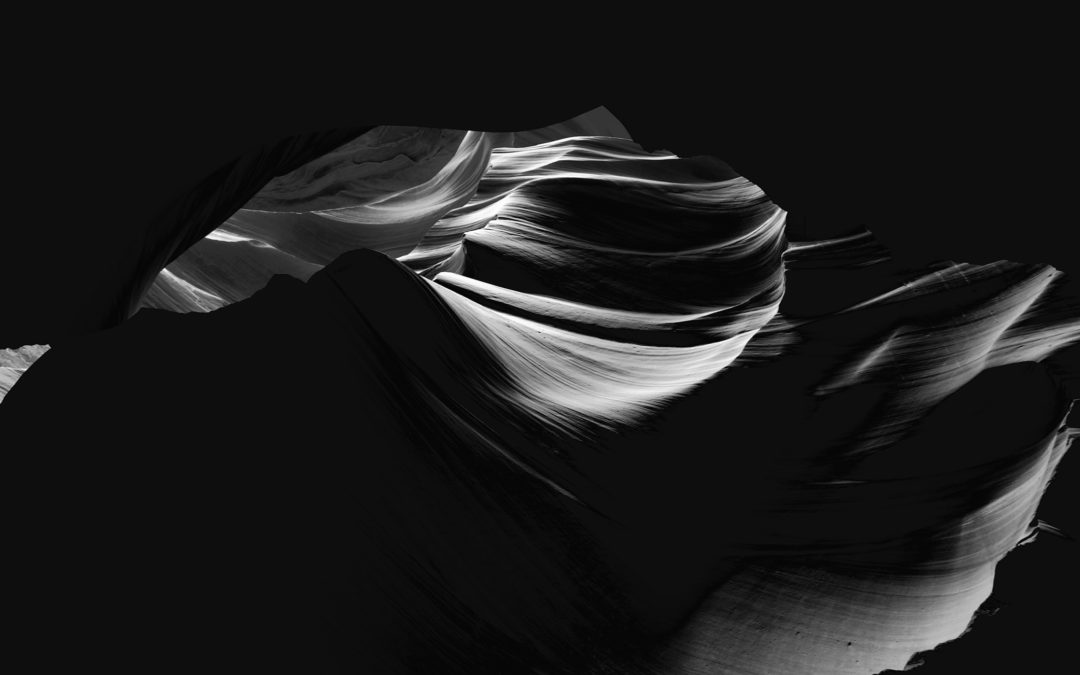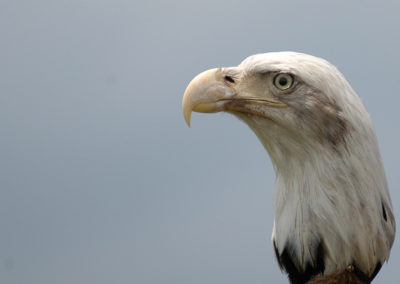The subject of positive and negative space is something I often discuss. When looking at an artist’s work, I find the positive and negative space beyond the subject matter and often, when it works, it can turn a work of art from something great to something stunning. I use the terms, artist and work of art to describe photographers and their photographs because I truly believe it to be one and the same. Two of my favorite quotes help define what I am looking for each time I look at a work of art and provide a thought-provoking explanation of the use of positive/negative space in the art of photography.
First, from Chelsea Wells:
“What do positive and negative space mean in art? They are what create the tension in a piece. The interaction between these two elements is what directs your eye where to go when you view a design or painting. What you don’t include (negative space) is as important as what you do include (positive space). Negative space draws your eye to the subject of your art, giving it space to breathe. When you use it correctly, it gives a natural balance and sense of rightness to your composition. Negative space defines and emphasizes the main subject of a photo, drawing your eye to it. It provides ‘breathing room’ giving your eyes somewhere to rest and preventing your image from appearing too cluttered with stuff. All of this adds up to a more engaging composition.”
Second, from Photography Mad:
“Mastering the use of negative space takes time. We’re so used to focusing on the main subject in a scene that it can seem strange to treat it almost as an afterthought. However, doing so will make you consider each element in your scene more carefully, leading to much stronger compositions.”
Let’s take a look at several images from my collection of books, historical and current, that I believe give us insight into the use of both positive and negative space.

Profile by William Gilchrist from The American Annual of Photography, 1933.
Here, the negative space takes up about 80% of the image. My eyes go directly from the negative space to the face and back constantly searching the face…WHAT IS SHE LOOKING AT?

Glendale Studio, 1920, by Edward Weston from Margrethe Mather and Edward Weston.
Margrethe is almost lost in the image as she gazes out of the frame, while her arm brings the viewer’s eye back into it. Although there is the large area of negative space the viewer is constantly drawn back to the figure of Margrethe. My wife, Kelly, had never seen this image before and when she saw it her response was, “That is beautiful.”
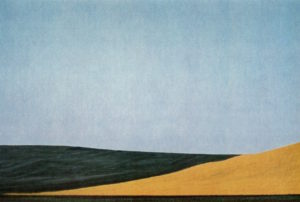

Left: Paysage, (Landscape), 1975. Right: Paysage, (Landscape), 1978. Both from Franco Fontana’s book Fullcolor.
Note here that the photographer uses color as the negative space. 1978 constantly draws you to the two clouds above the horizon, and 1975 uses only a small horizon at the bottom where the viewer’s gaze is constantly searching.
And in my own work:
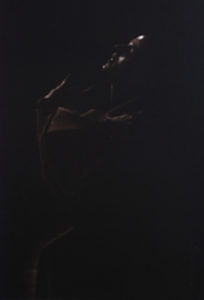
Ave Maria, 1978 by Dennis Collins.
This image was made when I really knew nothing about the art of photography much less negative and positive space. I took a dance class, so the dancers would feel comfortable with my presence. The performance was Ave Maria.
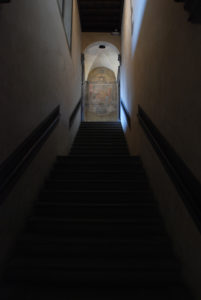
Florence Italy, 2010 by Dennis Collins.
This photograph was taken during a trip my wife, Kelly, and I took for our anniversary. This was a time when I was aware that the dark negative space would lead your eyes up the invisible stairs to the door above.

Antelope Canyon, 2015 by Dennis Collins.
With this photograph I wanted to do something different — black and white instead of color. The dark space surrounds, and I believe creates an abstract image that again leads the eye to the forms of the positive shapes.
As the saying goes, “food for thought” and hopefully these photographs offer a new perspective on how we might use positive and negative space when creating our art.
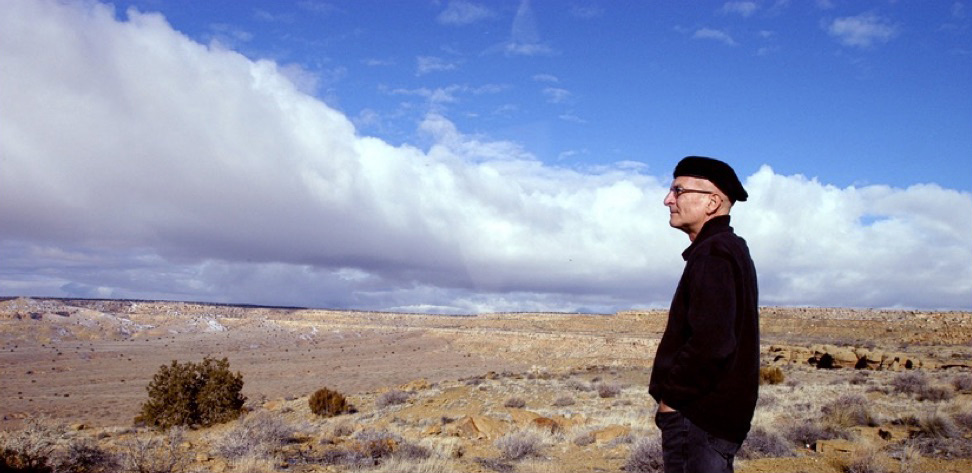
Dennis Collins
Contributing Writer
Dennis L. Collins has over 30 years experience as a corporate photographer and has a BFA from the Center for Creative Studies in Detroit, Michigan. His focus was on alternative process during his undergraduate studies. His interest lies in the timeless beauty of carbon printing being used by contemporary artists for modern images. Carbon printing is a particularly difficult and rare process that Dennis has painstakingly embraced; he is passionate about sharing his knowledge with others in hopes that this art form will continue. When he’s not in the darkroom, Dennis enjoys spending time with his family as well as volunteering at Art Intersection (Gilbert, Arizona) and Infinity Hospice.
Contact Dennis

